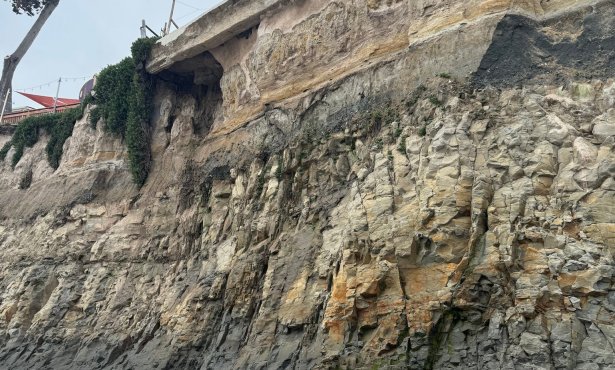Enemy of the State
Tosca, presented by Opera Santa Barbara. At the Lobero Theatre,
Saturday, February 18. Shows through March 4.
A security official, desperate to find an insurgent, tortures
his accomplice, an artist, in front of the artist’s girlfriend.
Anguished and broken, she finally gives up the insurgent’s
location, but the lovers face still more torture and sexual
humiliation, until murder, execution, and suicide end their pain.
Abu Ghraib? Guantanamo Bay? No — Rome in 1800, and Puccini’s Tosca
has never seemed more real and more horrifying. Glorious arias,
duets, and chorales cannot hide the vivid — and almost too
real — portrait of bureaucratic cruelty. Nor does this production
want to hide anything — under James Marvel’s brilliant direction
and Valéry Ryvkin’s skilled baton; Amy Johnson, as Floria Tosca,
the tormented diva; Michael Hayes, as Mario Cavaradossi, the
principled artist; and Todd Thomas, as Baron Scarpia, the vicious
bureaucrat, lay it all out for us. Even the remarkably complex and
realistic set, designed by Jean-François Revon, exposes their
gaping wounds. As Tosca, weeping in Scarpia’s office, hears
Cavarodossi’s cries, a painting on the wall behind her gradually
becomes transparent. Originally a portrait of a man holding his
enemy’s severed head, it becomes a window into the next room, where
her lover is being tortured. Great art makes human suffering and
brutality visible again, and just in time. But what has become of
beauty in such an ugly situation? Puccini received some of the
harshest criticism of his career when Tosca premiered in 1900,
mainly because of its many undeniably shocking moments, including a
corrupt official singing of lust and murder in counterpoint to a
church choir, and a diva stabbing a man several times and damning
his soul to Hell, just to name two. Still, the violence isn’t what
shocks us most — it’s the bluntness of the opera’s demands on its
creators and even on its audience. Puccini places Cavaradossi and
Tosca, two creative artists, in an impossible position, torn
between the ideals of honor, loyalty, and principle they embody in
their art and the realities of survival in a corrupt state.
Meanwhile, the pious bourgeoisie of Rome wander into the chapel to
express their piety, blind to the viciousness they endorse in their
tacit support of Scarpia, leaving us to wonder exactly what
measures we will tolerate in the name of security. Still, beauty is
the real point of it all — the beauty of love that transcends
despair, and even death. Beauty gives us hope, and Opera Santa
Barbara’s production gives us real beauty, even as we weep for poor
Tosca — and our souls.



